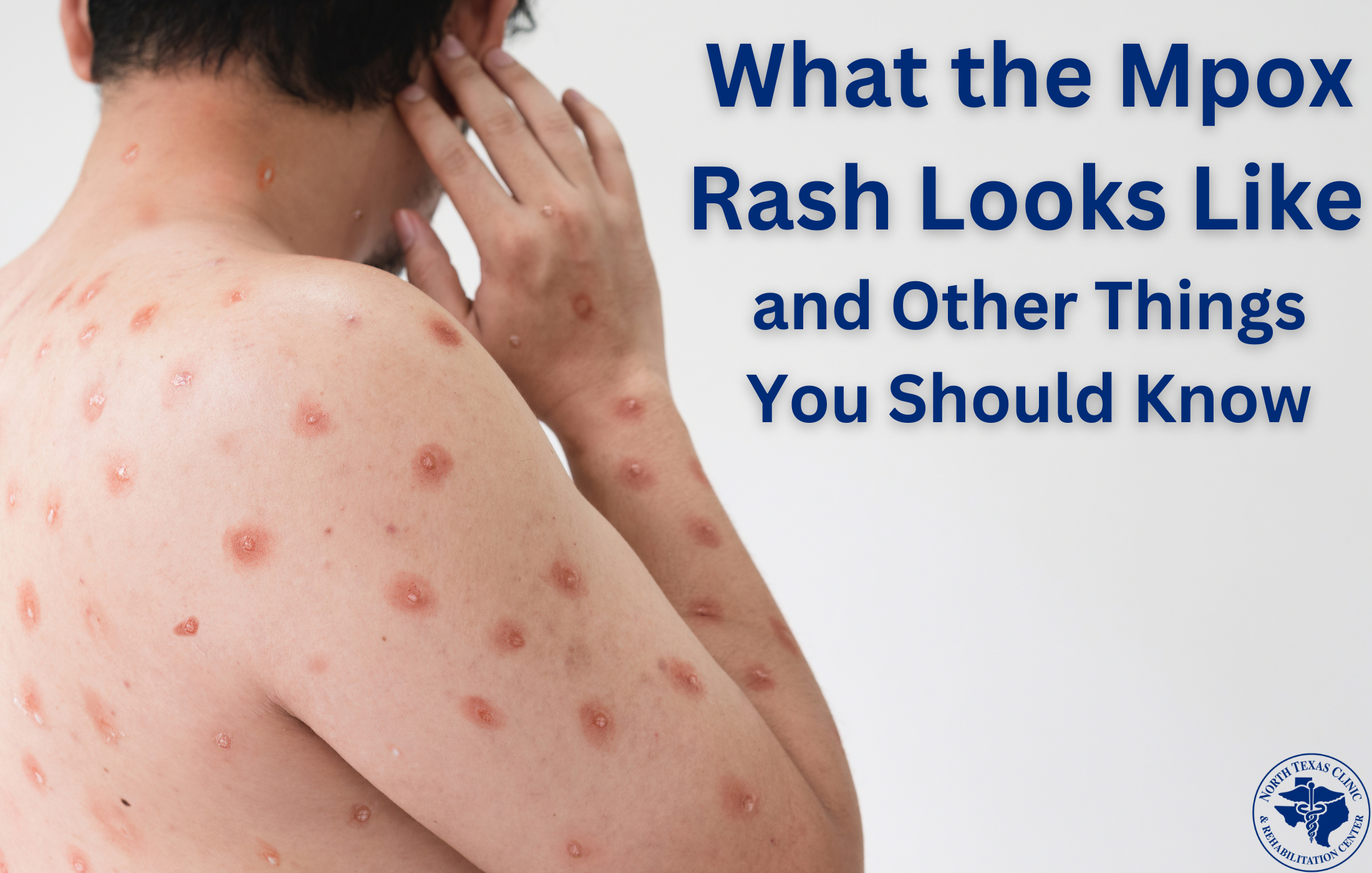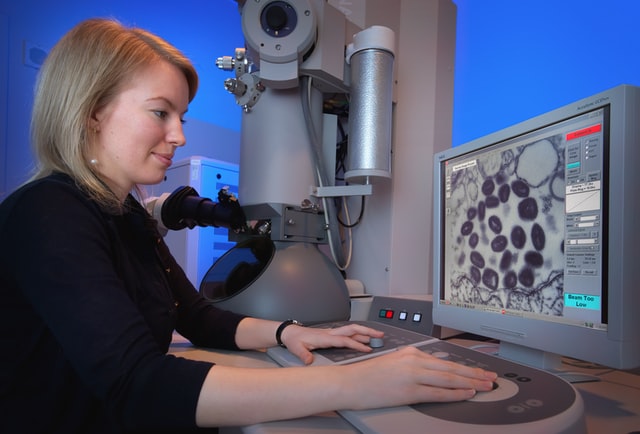
The spread of Mpox, formally known as monkeypox, has significantly reduced since 2022.* It’s become very rare in the U.S. However, there has been a recent uptick in Africa of both the original strain and a new subtype of the Mpox virus. If you think you might have an Mpox rash or other symptoms, you might be scared.
While you should have any rash checked out, it’s important to know what Mpox is and what it looks like. But first, you need to remember two important things.
Why You Should Be Aware (and Not Scared!) of Mpox
One, while it is contagious, it is not transmitted as easily as COVID-19 because it isn’t airborne. We know how scary it is to hear about another possible pandemic, but that probably will never be something you should worry about with this viral condition.
The WHO’s recent declaration citing this new outbreak as a public health emergency of international concern (PHEIC) is designed to spread awareness and increase vaccination rates. Rather than causing fear, they want to prevent another worldwide outbreak by containing it quickly and protecting vulnerable populations.
Two, although it is related to smallpox, it isn’t as severe or deadly, especially the strain (Clade 2) that broke out in the U.S. in 2022. The strain currently spreading across Africa, known as Clade 1, does cause more severe illness, but with a fatality rate of 3.6%, it is much lower than that of smallpox. Most people who have it, even in third-world countries, survive and heal completely within four to six weeks.
What is Mpox?
Mpox is a viral zoonotic condition, meaning it can be transmitted from animals to humans as well as from person to person. It is part of the Orthopoxvirus genus, which includes Smallpox, Cowpox, and other similar diseases.
It is typically a rarely seen disease, even in its most common locations in central and west Africa. Usually, people traveling from these areas or imported animals are the only time cases occur outside Africa.
Experts first discovered Mpox in a group of monkeys they were using for research in 1958. Then, in 1970, the Democratic Republic of the Congo (DRC) recorded the first case in a human while attempting to eradicate smallpox in their population.
Since then, doctors and researchers have seen it in people throughout specific regions in Africa.
What Does an Mpox Rash Look Like?
The most obvious symptom is a painful, pox-like rash that can start on the infected person’s hands, feet, face, mouth, or genitals. This rash begins with flat, red spots that become raised and filled with pus over the course of five to seven days as it spreads across the body.
Yes, for some, an Mpox rash can look like acne.
Before the rash appears, other symptoms include headaches, fever, muscle pain, swollen lymph nodes, and exhaustion.
Although these symptoms are similar to smallpox, except for swollen lymph nodes, this is a much less severe disease.
Since these symptoms are common with any infection, it’s always a good idea to see your doctor any time you feel sick.
How is it Transmitted?
Because of its rarity, virologists and other researchers are continuing to study Mpox transmission to learn everything they can about this outbreak.
However, we do know that it is transmitted through person-to-person contact, meaning direct touching from an infected person.
Men, women, and children can get it. That’s why it’s important to monitor symptoms for Mpox or any other lesions and avoid direct or indirect contact with others during an active outbreak.

Prevalence of Mpox in the U.S.
While doctors and researchers across the nation continue to monitor and gather information, there have been just over 30,000 verified cases of Mpox in the U.S. as of Jan 1, 2024. (Click the link to see a detailed map of how many cases per state.)
Fortunately, the infection rate is now so low here that they are no longer collecting data on the national level, just state and local.
Worldwide, cases have risen to almost 100,000, largely during the outbreak in 2022. Experts believe that Mpox may have been spreading undetected for years, possibly even decades, without any tracking or knowledge of its transmission.
The CDC continuously updates its website as experts confirm more cases across the U.S. and worldwide. You can visit the official CDC website if you would like to keep up with the latest reports of Mpox and other health-related news.
The most crucial thing to know is that if you have symptoms of an Mpox rash or any infectious disease, you should see your healthcare provider as soon as possible.
How to Stay Safe
As with all infectious diseases, the number one way to stay safe is to wash your hands, especially after interacting with the public.
If you know somebody has a rash, avoid all skin-to-skin and face-to-face contact. Because lesions can occur in the mouth and nose, Mpox may be transmissible through saliva during sneezing, coughing, or even talking.
Of course, contact can be difficult to avoid if the infected person is your child or somebody you care for. In these cases, wear gloves whenever possible, wash your hands frequently, and wear a mask. They should frequently wash their hands and wear masks, as well.
An Mpox rash and symptoms can last between two to four weeks, and transmission is possible during that entire time. As with Chickenpox, it is typically no longer contagious when the rash has completely scabbed over and begun to heal.
Talk to Your Provider About Rashes and Symptoms
Nobody wants to be fearful or prepared for another pandemic, and fortunately, that’s probably not something we have to worry about with Mpox, especially now that we’ve gotten over the fast spread.
Even if you do get it, the chances of severe reactions are minimal. Historically, in Africa, the Mpox mortality rate is just 5%. Most people don’t even require treatment before healing completely.
Only 1% of people verified to have this current strain of Mpox have died, and none of those deaths has occurred in the U.S.
Since COVID-19, we’ve all learned to be a little more watchful and careful with hygiene in public, and this outbreak is a reminder that it’s still just as important.
Keep washing your hands, and talk to your healthcare provider if you suspect you have an Mpox rash or other symptoms.
The chances are low that you do, but the only way to stop the spread is to know where it is.
*Updated on Aug. 21, 2024.






